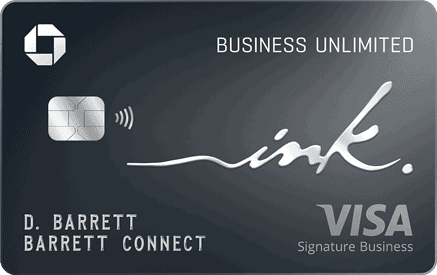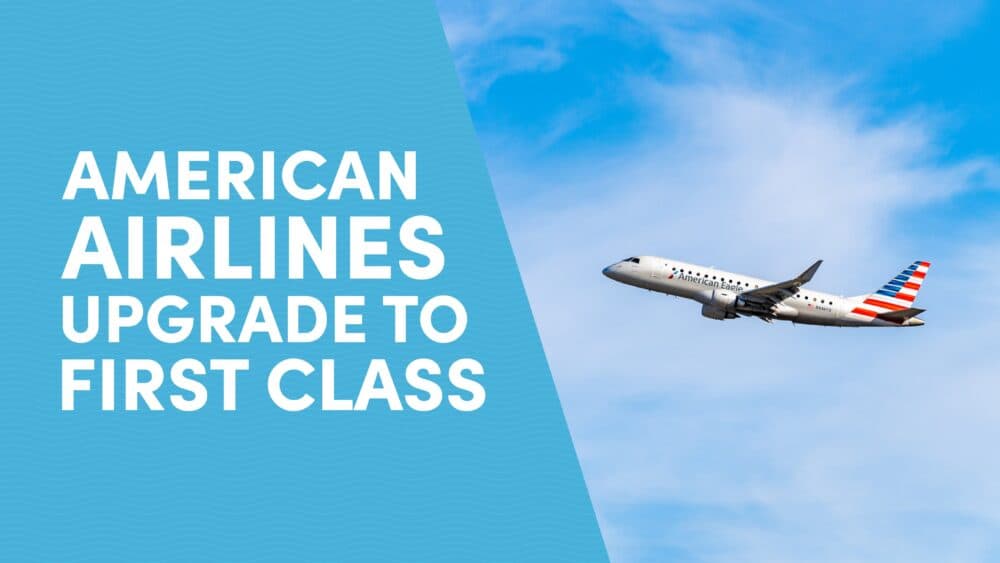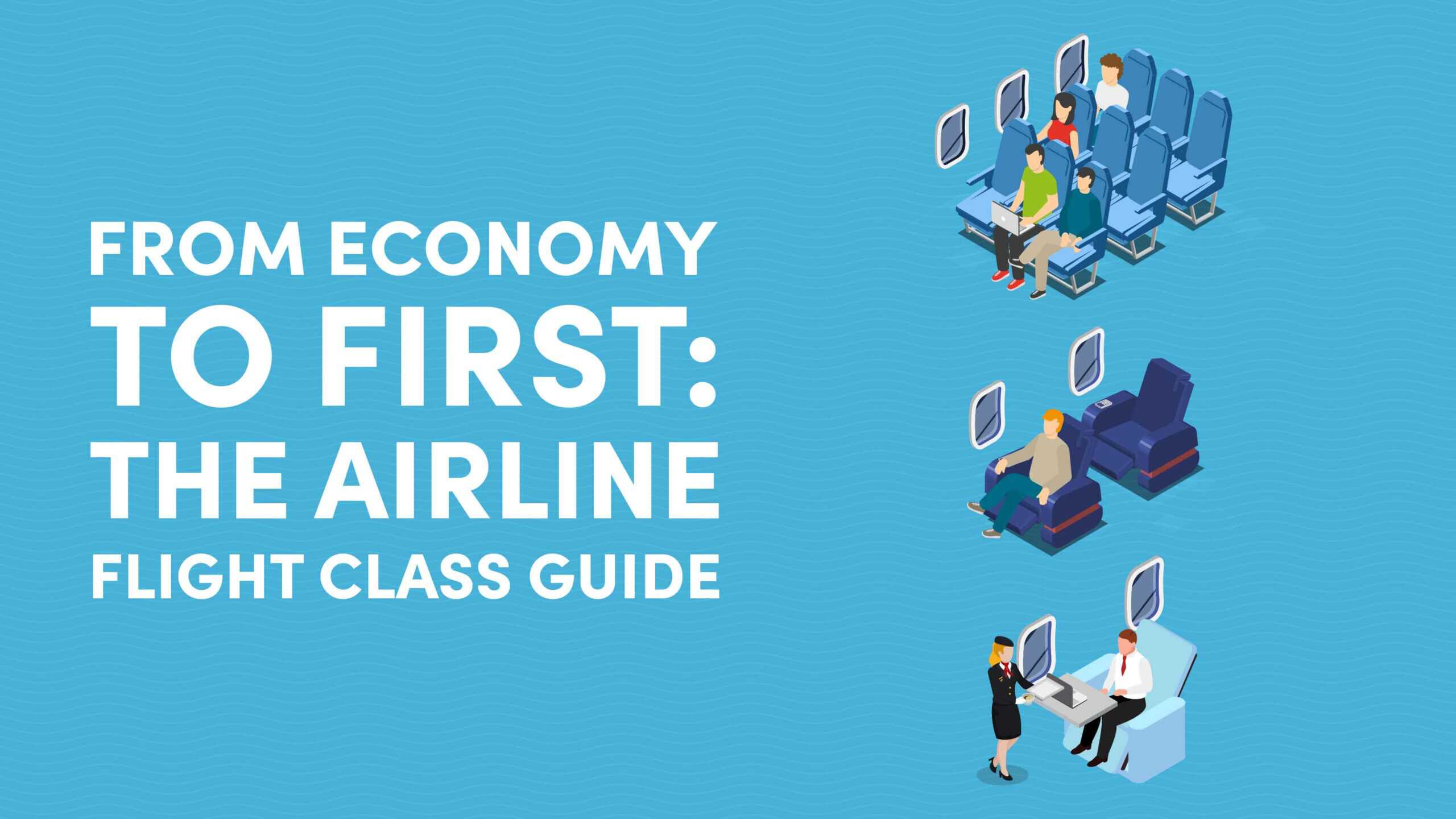
10xTravel is part of an affiliate sales network and receives compensation for sending traffic to partner sites, such as CreditCards.com. This site may earn compensation when a customer clicks on a link, when an application is approved, or when an account is opened. This compensation may impact how and where links appear on this site. This site does not include all financial companies or all available financial offers. Terms apply to American Express benefits and offers. Enrollment may be required for select American Express benefits and offers. Visit americanexpress.com to learn more. All values of Membership Rewards are assigned based on the assumption, experience and opinions of the 10xTravel team and represent an estimate and not an actual value of points. Estimated value is not a fixed value and may not be the typical value enjoyed by card members.
Note: Some of the offers mentioned below may have changed or may no longer be available. The content on this page is accurate as of the posting date; however, some of our partner offers may have expired. You can view current offers here.
Citi is an advertising partner.
Depending on where you’re seated on a plane, your flight experience can differ tremendously.
While the difference between an aisle and a window seat can already influence your experience, the real contrast is between different airline flight classes.
Let’s take a look at the differences between each of the flight classes, whether first and business class are worth the extra cost and how you can acquire a premium ticket at a fraction of the price.
Decoding the World of Airline Flight Classes
With what feels like a dizzying number of options to choose from, often with their own fancy branded names, airline flight classes can seem confusing.
However, while different airlines may give different names to their flight classes, there are generally four different flight classes, regardless of the airline:
- Economy
- Premium Economy
- Business
- First Class
Generally speaking, the higher the class, the higher the ticket price and the more amenities you can expect.
That said, the same plane classes can vary significantly between airlines. For instance, the quality of one airline’s economy class may outstrip another airline’s premium economy class. Likewise, the different flight classes of varying airlines don’t all have the same seating layout. Just because two airlines both use the Boeing 787-900, doesn’t mean you should expect their seating to be identical.
That’s where doing your homework before booking a flight is key.
To avoid sitting next to the hustle and bustle of the galley or ending up in a windowless “window seat,” you can take advantage of seat selection tools to find the latest seating map for your prospective airline.
It’s important to book airplane classes according to your needs, expectations and financial situation. For example, if you’re concerned only about getting from A to B in the cheapest way possible, splurging on a first class ticket is unlikely to be the best choice. Alternatively, if the in-flight experience is a key part of what you’re looking forward to, flying coach isn’t the smartest move.
Perks and Amenities of Different Flight Classes
Let’s now run through the differences between plane seat classes, covering the amenities offered and what to expect.
First Class
It’s no secret that first class is the best of the best when it comes to luxury air travel.
Regardless of which airline you chose, first class passengers can expect access to the airline’s airport lounge when flying internationally, priority boarding, lie-flat seating, built-in privacy features (from suites and sliding doors to contoured headrests), extra space for belongings and bags, gourmet dining and personalized service.
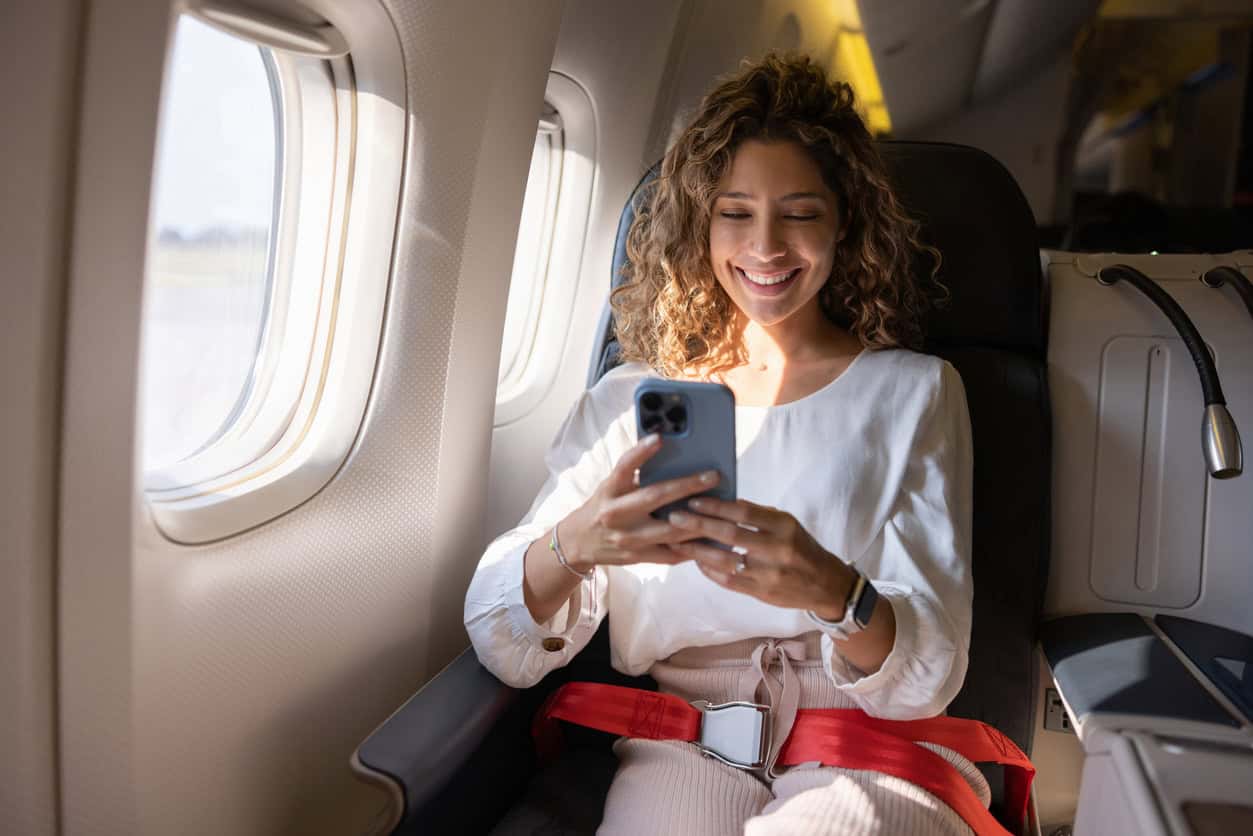
While a universal basic standard of luxurious, personalized service exists across the first class products of all airlines, the details of the experience can vary widely from one airline to the next.
First class products can be truly over-the-top when it comes to luxury, making them highly valuable.
Business Class
Business class straddles between first class and economy from the level of amenities you can expect to receive, as well as the cost of the ticket.
However, its quality is typically far closer to first class than it is to economy.
Business class tends to include spacious, wide seating with extra legroom. In some cases, certain airlines already include lie-flat seating and built-in privacy features in their business class cabin.
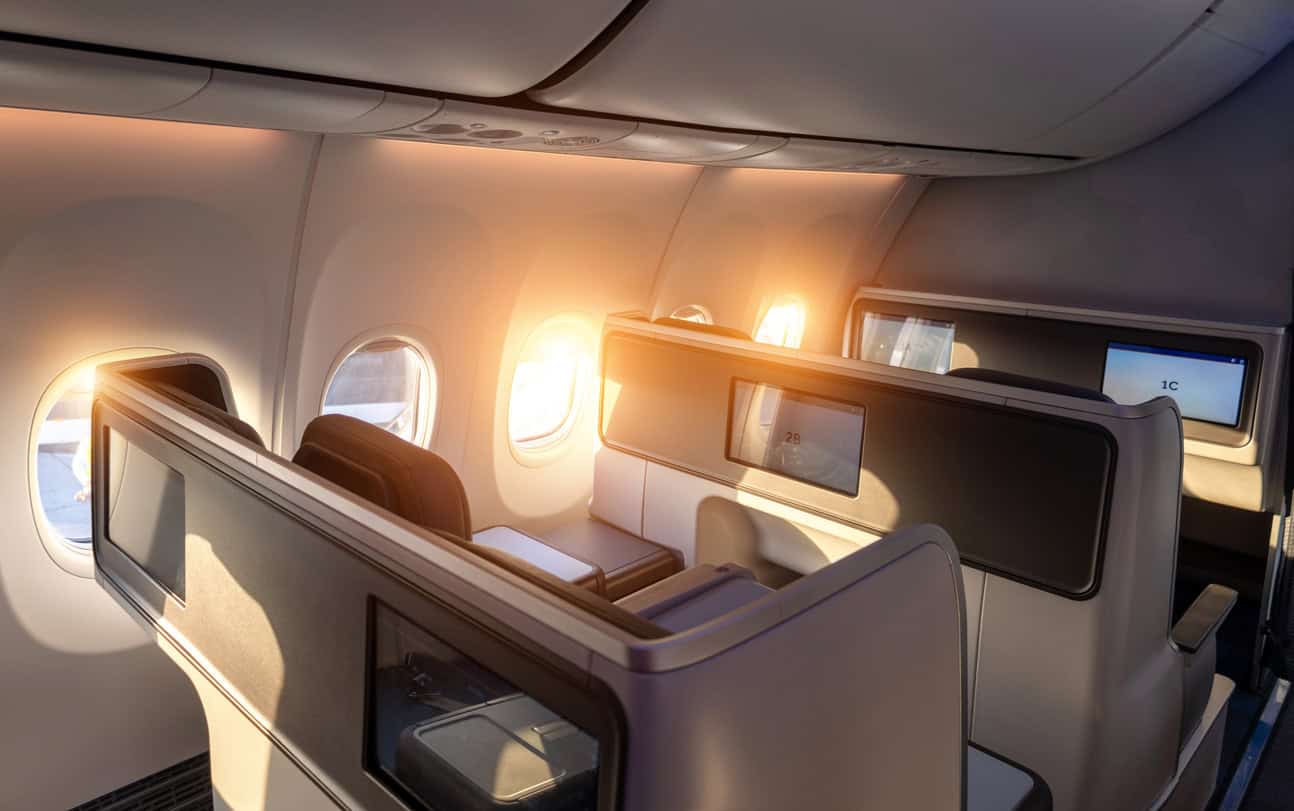
If you’re traveling on an international business class ticket, you can also expect access to the airline’s airport lounge. You’ll also enjoy priority boarding, allowing you to board before the crowds. Typically, once you’re on the flight, you’ll be treated to a quality complimentary dining experience — usually served with proper cutlery and china — with a range of beverages to choose from.
On some airlines, business class products have completely replaced their first class cabin.
For passengers wanting a more comfortable or productive experience from beginning to end, flying business class is a good option.
Economy Class
Economy class, often referred to as flying “coach” or “main cabin,” is a solid option if you want the cheapest fare and are willing to forgo the luxuries of first and business class.
Seating tends to be narrower in economy class with less legroom available and limited ability to recline. For international flights, you can expect to have some form of meal service, depending on the duration of the flight and the airline, as well as in-flight entertainment, though many of the dining options will come at an additional cost — particularly for domestic flights.
Seat selection typically comes at an extra fee for economy passengers, although some airlines allow you to select your seats free of charge during check-in 24 hours before the flight departs.
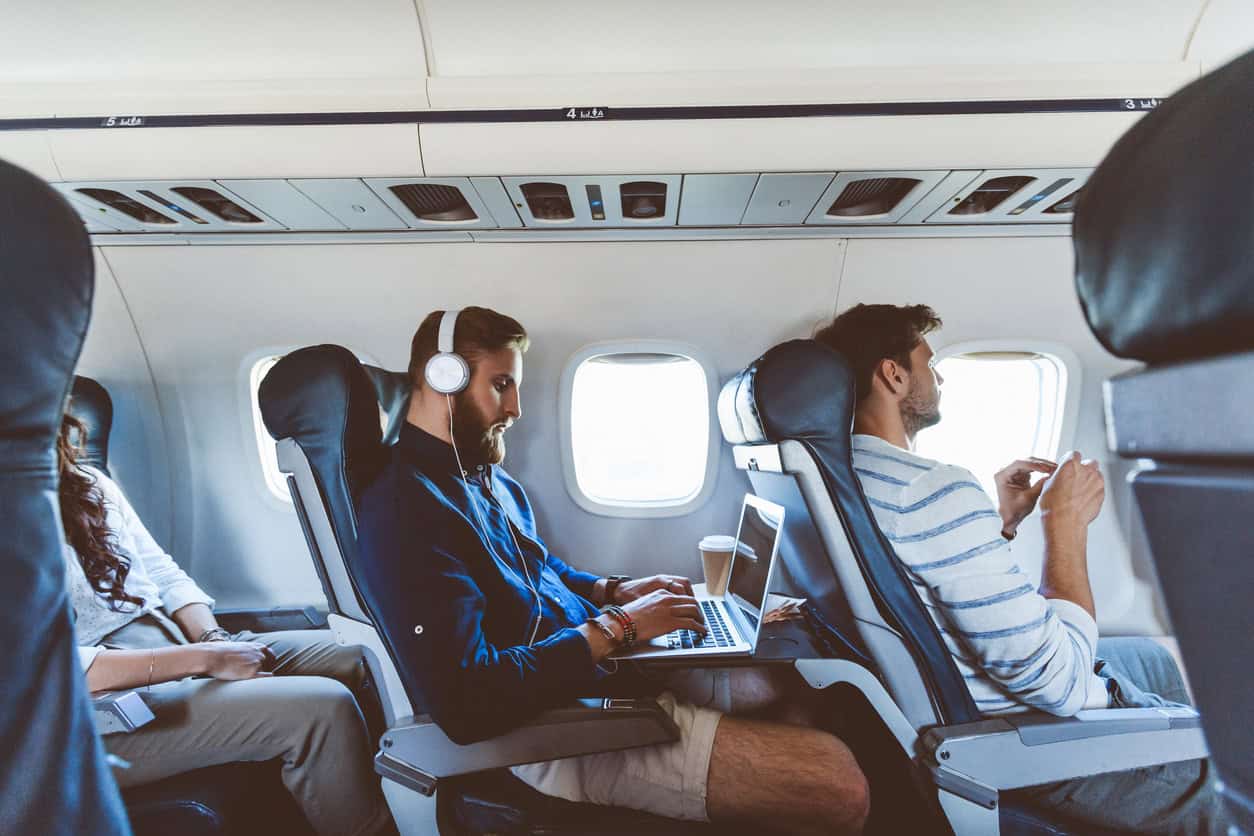
Some airlines offer premium economy as a separate class that’s typically located in the same cabin as economy passengers. For a slightly higher airfare, premium economy passengers can typically enjoy more legroom, a complimentary meal, an increased baggage allowance, seat selection and a flexible ticket — although this varies highly from airline to airline.
Japan Airlines and All Nippon Airways (ANA) also give their premium economy passengers complimentary lounge access at select airports in Japan, though this is rare for an airline.
If cheap airfare is your main priority, economy class will be the one to go for. And if you want slightly more than the bare minimum without splurging on a business class ticket, go for premium economy.
The Cost Differences Between Flight Classes
The difference in cost between an economy class fare and a first class fare can be stark — in some cases, it can easily be a difference of more than a thousand dollars.
Likewise, the difference between an economy or premium economy fare and a business class fare is also typically large, though not as great as with a first class fare.
The smallest price difference is between that of an economy class fare vs. a premium economy fare.
While a basic economy fare will get you to your destination for a fraction of the price a business or first class fare will, the more you pay the greater the range of amenities and allowances you’ll enjoy.
Choosing the Right Flight Class for Your Travel Needs
Unless you’re prioritizing the price at all costs, upgrading to a premium economy fare can make a lot of sense — especially if you have to fly coach on an international flight.
While premium economy will cost a little extra, you can get a range of benefits in return, including more legroom, better in-flight entertainment, a wider choice of dining options, better service, a greater baggage allowance and increased ticket flexibility (vis-à-vis refunds and flight changes).
For what’s often a small price increase, the returns are well worth it. This is particularly so for medium and long-haul flights.
When considering whether a business class fare is worth it, you need to consider factors such as the length of the flight, the quality of the airline’s business class service and what your travel goals are.
A business class fare can easily be a couple of hundred dollars more expensive than a basic economy fare. If getting from A to B is your one and only priority, not much could justify upgrading to business class — except for one thing: baggage allowances.
If you have a lot of checked baggage to bring with you, it can be more cost-effective to book a business class fare compared to an economy fare. Most airlines will charge extra for checked bags on an economy fare.
Given that most business class fares include an additional baggage allowance, you could end up saving money if you have a lot of baggage and/or heavy baggage.
For this reason, you should always calculate the cost of your baggage into the price of economy tickets before ruling out business class fares.
Deciding whether it’s worth flying first class is a different issue. While business class can offer cost-savings compared to a basic economy fare in certain instances, the same can’t be said for a first class fare.
First class is synonymous with luxury.
The first class experience typically begins well before the flight departs. From a chauffeured airport transfer and pre-flight fine-dining in the airline’s lounge to priority boarding and a private double-bed suite once on board, your ticket pays for an all-inclusive luxury experience.
So if you’re taking the trip of a lifetime, flying to your honeymoon destination or have some other special occasion, with the money required to afford the airfare, flying first class might be worth it.
Unless you’re able to fund your booking with frequent flyer miles (more on that below), stick to business class and premium economy fares.
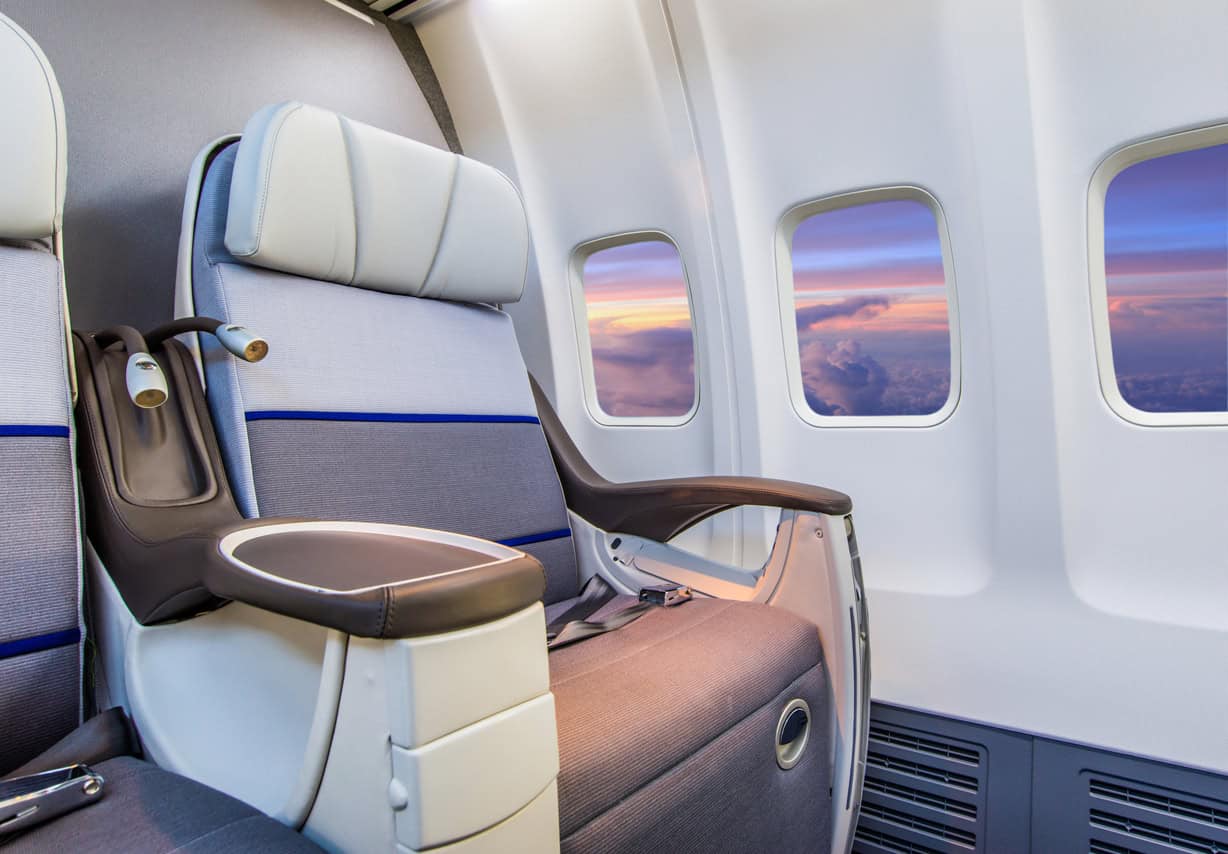
Upgrading to a Higher Class
While the dream of flying first class may seem like the reserve of the rich and famous, luckily this isn’t the case.
If you have elite status with an airline, you can enjoy being at the top of the waiting list when it comes to complimentary upgrades.
Delta Air Lines offers four levels of status to its frequent flyers: Silver, Gold, Platinum and Diamond Medallion status. The higher your status, the more priority you have for complimentary upgrades — alongside a slew of other perks, from priority boarding and waived baggage fees, to Delta Sky Club access.
Delta status tiers are reached by earning a certain number of Medallion Qualification Dollars (MQDs), which can be earned either by flying with Delta (or an eligible partner-operated flight) or spending with a co-branded Delta credit card.
The following co-branded Delta credit cards offer cardholders an annual MQD bonus “headstart,” allowing you to achieve status faster and get more upgrades:
- Delta SkyMiles® Platinum American Express Card
- Delta SkyMiles® Platinum Business American Express Card
- Delta SkyMiles® Reserve American Express Card
- Delta SkyMiles® Reserve Business American Express Card
United Airlines also offers four levels of elite status: Premier Silver, Gold, Platinum and 1K. In addition to an array of other benefits, United elite status tiers offer the following benefits when it comes to getting complimentary upgrades:
- Premier Silver: Free access to Economy Plus at check-in for you and one companion, as well as eligibility for complimentary upgrades on the day you fly.*
- Premier Gold: Free access to Economy Plus when booking for you and one companion, as well as eligibility for complimentary upgrades 48 hours before you fly.
- Premier Platinum: Free access to Economy Plus when booking for you and up to eight companions, as well as eligibility for complimentary upgrades 72 hours before you fly.
- Premier 1K: Free access to Economy Plus when booking for you and up to eight companions, as well as eligibility for complimentary upgrades 96 hours before you fly.
* Upgrades of any type are not allowed for Basic Economy fares or Economy (first bag charge/no changes allowed) fares.
To get status, you’ll need to earn either Premier Qualifying Flights (PQP) or Premier Qualifying Points (PQP) or a mixture of both. You can do this by flying or by spending with a co-branded United credit card.
American Airlines also offers complimentary upgrades to AAdvantage® members who meet the following requirements:
- Are traveling with any eligible purchased, published fare or AAdvantage award ticket in the Main Cabin or Premium Economy
- Are traveling within North America
- On an eligible American Airlines operated and marketed flight
- For up to one companion on the same flight
The American Airlines AAdvantage program similarly offers four levels of status, being: AAdvantage Gold, Platinum, Platinum Pro and Executive Platinum status. Upgrades are automatically requested in the system, giving you the chance for an upgrade with every booking made as an AAdvantage member.
Gold members will have their upgrade auto-requested 24 hours before departure, Platinum members 48 hours, Platinum Pro members 72 hours and Executive Platinum members 100 hours.
As a Citi® / AAdvantage® Executive World Elite Mastercard® holder, you can earn loyalty points toward status with every purchase, putting you closer to complimentary upgrades.
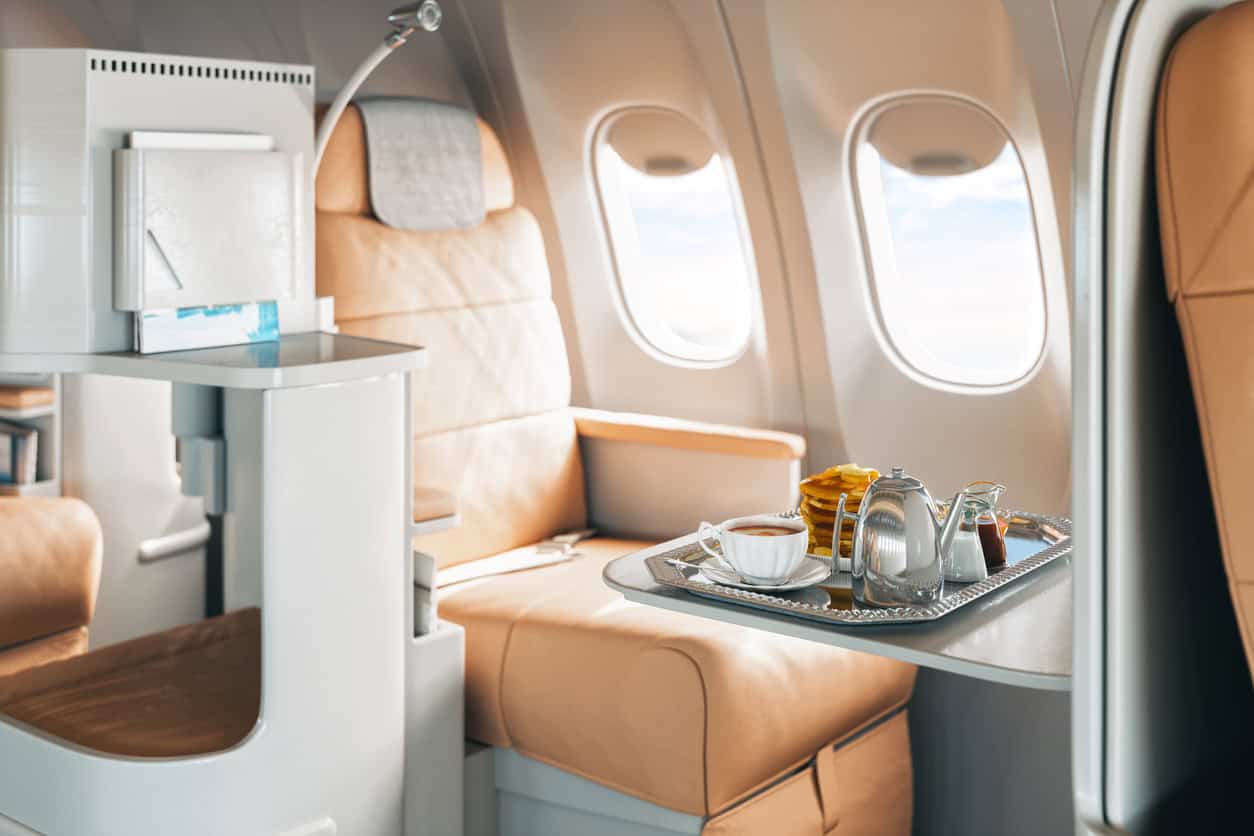
Aside from leveraging elite status and earning loyalty points with co-branded airline credit cards, having a solid airline miles redemption strategy is another way to get business and first class award bookings for a fair price.
Understanding airline partnerships and knowing which miles go the furthest with each loyalty program is key to maximizing the value of your redemptions and getting premium tickets for a reasonable price.
For example, using the Aeroméxico Rewards program while booking flights from the U.S. to Mexico or any other SkyTeam Alliance member award bookings, is an excellent way to maximize the value of your miles. Alternatively, using British Airways Avios to book domestic American Airlines flights can save you on taxes, fees and frequent flyer miles compared to booking directly through American Airlines.
Or, if you manage to get yourself a Virgin Atlantic companion seat, you could even bring a companion with you on your award booking.
These are just two examples of many. By understanding where your hard-earned miles give you the most value, you’ll be better positioned to redeem them for business and first class award bookings.
Unique Offerings of Airline-Specific Flight Classes
As already mentioned, the quality of flight classes varies from one airline to the next.
Emirates
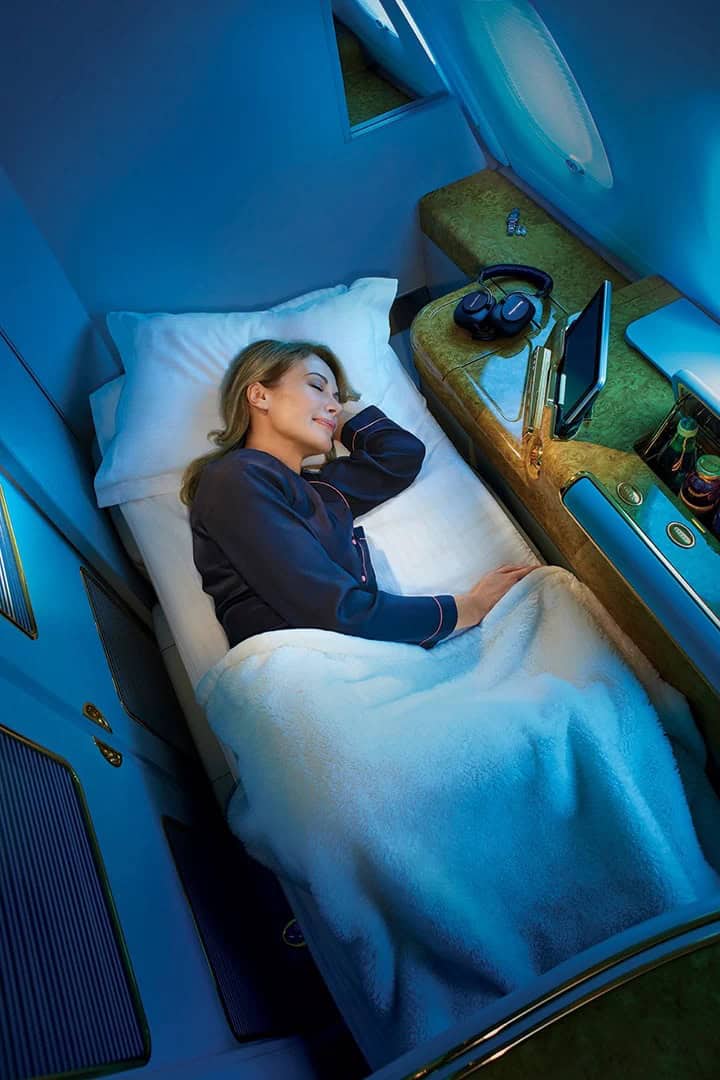
Emirates A380 First Class | Image Courtesy of Emirates
The A380 and Boeing 777 first class products of Emirates are some of the best in the industry. With private sliding-door suites, complimentary self-moisturizing pajamas and Bvlgari amenity kits, an on-board bar and the opportunity to shower, a first class ticket with Emirates unlocks a world of luxury. So if you have some Emirates Skywards to spare, redeeming them toward a first class ticket can be worth its weight in gold.
Singapore Airlines
Singapore Airlines is another luxury first class contender, offering double-bed suites with a private 32-inch HD touchscreen monitor paired with Bang & Olufsen noise-canceling headphones and internet connectivity, among a host of other luxury amenities. Many of the suite’s features can be controlled through a single touchpad, through which you can also contact the cabin crew.
Cathay Pacific
Similarly, Cathay Pacific’s first class cabin offers a unique experience. After sipping on one of its complimentary craft beers from the Hong Kong brewery Gweilo Beer, the cabin crew will present you with Cathay Pacific’s exclusive “pillow menu,” enabling you to select the firmness of your pillow, before laying your head to rest.
Etihad Airways
If you like breakfast in bed, you can enjoy it in Etihad’s “The Residence,” its three-room private first class suite, after your complimentary chauffeured ride to the airport and pre-flight rest in Etihad’s First Class lounge.
Qatar Airways
When it comes to business class, Qatar’s private Qsuite product, Singapore Airlines’s 34-inch wide lie-flat seats and ANA’s “The Room” business class seat that verges on first class quality, are some of the best in the industry.
Japan Airlines
When it comes to economy, Japan Airlines has been rated as the world-leading airline for the best amenities in economy class.
The Future of Flight Classes
The future of flight classes — in particular first class — is uncertain.
After the hit the airline industry took during the Covid-19 Pandemic, some airlines have since cut their first class cabins altogether, now offering business and economy fares exclusively. Delta and United have already scrapped their first class service on international flights, with American Airlines planned to follow suit later this year.
With production coming to an official end for both the 747 and A380, airlines are looking to further reduce the size of their first class cabins while making the existing ones even more luxurious — think suites, with permanent beds, 4K TVs and more.
First class, while giving airlines a sense of exclusivity and luxury from a marketing point, has (more or less) reached its end regarding improvements. Instead, airlines have now been focusing on improving their business class products. Lie-flat beds, privacy dividers and gourmet dining options used to be the reserve of first class cabins only — now they’re the expected standard in most business class cabins.
This trend will likely continue, with business class growing in its offerings and luxury amenities.
That being said, airlines in the Gulf and Asia will likely continue to provide their first class products, given their reputation for these services.
Sustainability is another growing trend in airline flight classes, from economy to first. Sustainable amenity kits and reusable tableware are now the focus of major airlines, looking to reduce their carbon footprint and increase their customer base.
Elevating Your Flying Experience with the Right Flight Class
Whether you choose to fly economy, business or first class will depend on several circumstances. Your ability to pay for your ticket, either with cash or by using frequent flyer miles, your baggage requirements, the duration of the flight and the offerings of the specific airline all come into play when deciding which flight class to select.
As first class products decrease in availability and more investment goes into expanding business class products, you might just end up on a business class fare sooner than you think.
New to the world of points and miles? The Chase Sapphire Preferred® Card is the best card to start with.
With a bonus of 75,000 bonus points after you spend $5,000 on purchases in the first 3 months from account opening. , 5x points on travel booked through the Chase TravelSM Portal and 3x points on restaurants, streaming services, and online groceries (excluding Target, Walmart, and wholesale clubs), this card truly cannot be beat for getting started!
Editors Note: Opinions expressed here are author’s alone, not those of any bank, credit card issuer, hotel, airline, or other entity. This content has not been reviewed, approved or otherwise endorsed by any of the entities included within the post.




